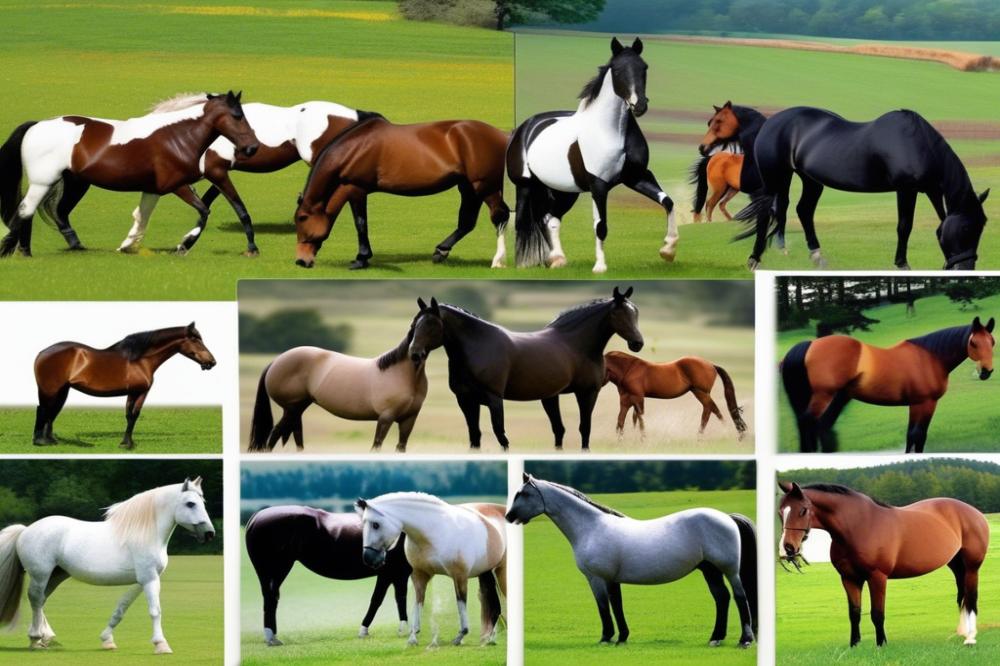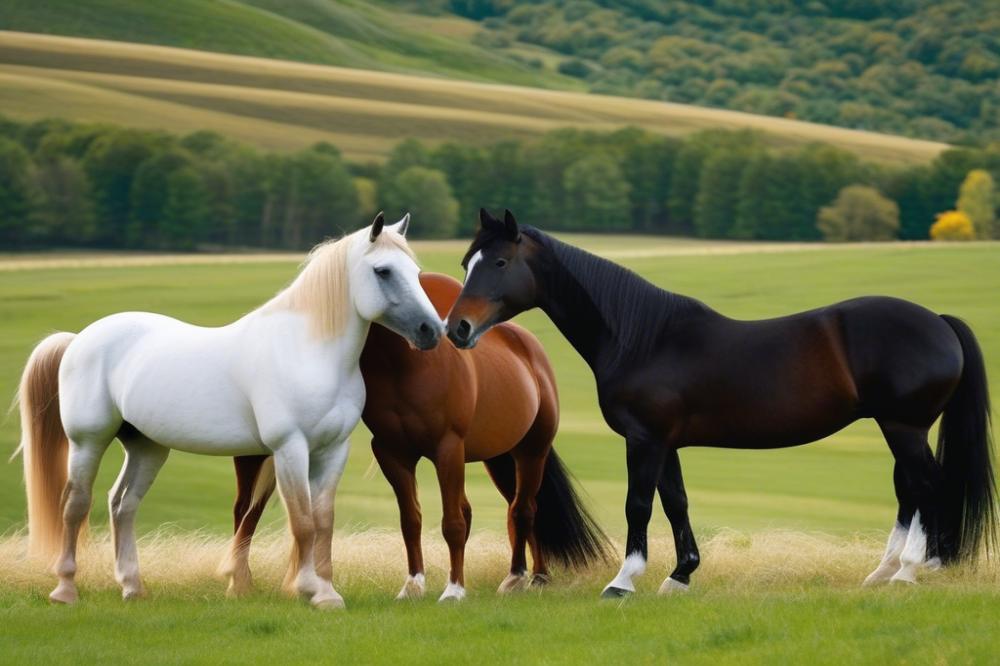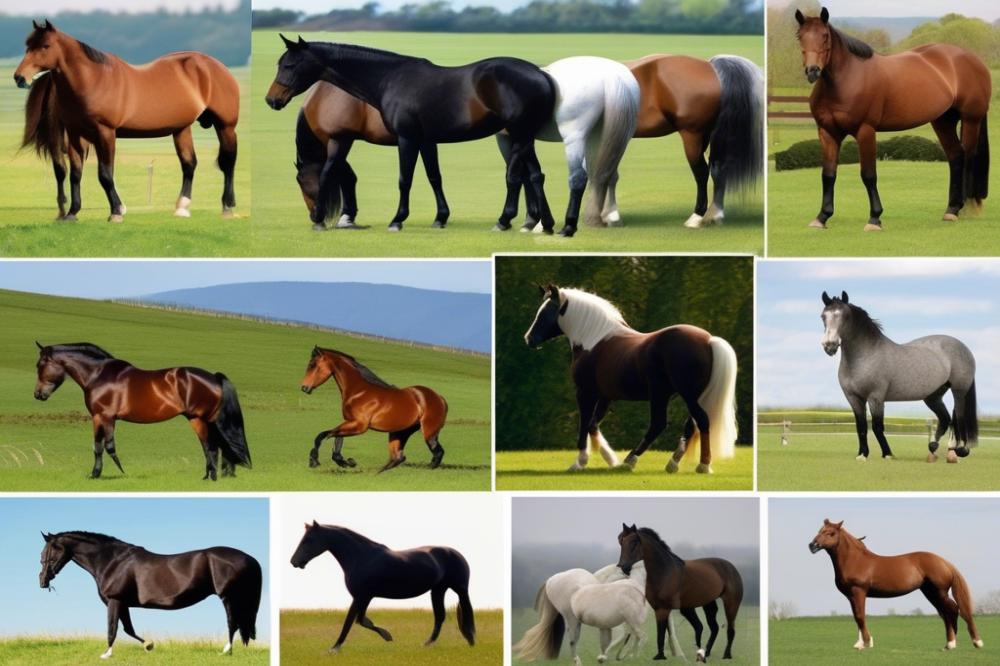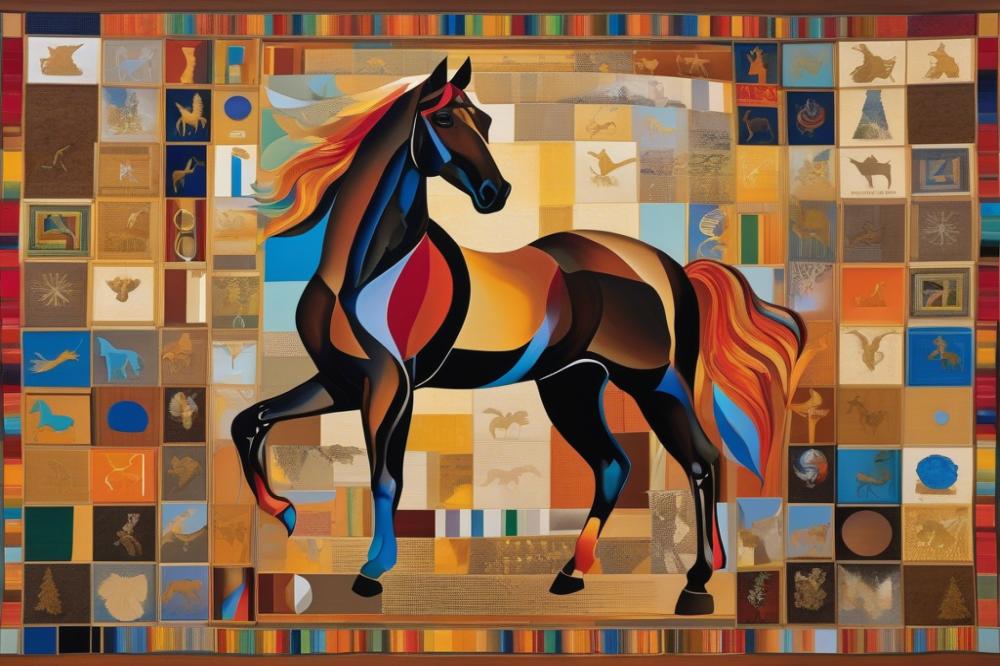Introduction
Understanding the science of horse genetics offers fascinating insights into the traits that define these majestic animals. One of the most visually striking aspects of a horse is its coat color. This feature not only influences the horse’s appearance but also plays a vital role in breeding decisions. With so many variations, appreciating how coat color is determined can enhance our knowledge about horses and their lineage.
Many factors come into play when discussing equine genetics. The genetic code carries information that dictates everything from size to personality traits. Specific genes are responsible for the variety of coat colors seen in horses today. Some horses have solid colors, while others exhibit patterns like spots or stripes. These differences arise from complex interactions between multiple genes.
A good grasp of equine biology significantly helps in understanding how coats develop. For instance, pigments in hair are influenced by genetic makeup. Understanding these mechanisms can guide breeders in selecting horses that meet specific aesthetic or functional needs. Learning about coat color genetics can therefore assist breeders in achieving desired results. By selecting individuals with particular traits, one can influence future generations. The study of horse genetics is essential for anyone involved in breeding or caring for these magnificent creatures.
Understanding equine genetics

Genotype refers to the genetic makeup of a horse. It consists of alleles that determine specific traits. In contrast, phenotype is the observable expression of those traits. For example, the coat color of a horse is its phenotype, while the underlying genetic information is its genotype. This distinction is essential for understanding how horses display various colors and patterns.
Basic principles of genetics play a critical role in coat color. Genes are located on chromosomes, which come in pairs. Each parent contributes one chromosome to offspring, thus mixing genetic material. Dominant and recessive traits govern how specific colors appear. A dominant allele might cover up a recessive one, leading to various color outcomes. Understanding this helps owners predict coat colors in future foals.
The role of heredity in horse colors and patterns cannot be understated. Traits inherited from parents can skip generations or blend together. For instance, a palomino parent and a chestnut parent can produce a foal with a different hue. This blending occurs due to the complexity of genetic combinations. In some cases, genes interact in ways that create unique patterns, like spots or stripes.
It is fascinating how certain genes affect multiple traits. One gene might not only influence color but also texture of the coat. This interplay creates a wide spectrum of possibilities. Horse enthusiasts and breeders often study these patterns to track lineage and breed characteristics. Knowing the genetic background is vital for making informed decisions in breeding.
Horse Colors and Their Genetic Basis

Horse colors are fascinating and complex. The coat color of a horse is influenced by genetics in various ways. Common colors include bay, chestnut, black, and gray. Each of these has its own unique genetic background, which determines not only its appearance but also its heritage.
Starting with the basics, the primary colors are defined by the presence or absence of specific genes. Black horses have a dominant gene that expresses their deep color. Chestnut horses, however, show a recessive trait, which requires two copies of the recessive gene to appear. Color combinations can create a rich tapestry of shades and patterns. For instance, a bay horse has a black base with chestnut points, highlighting the power of mixing genes.
Dominance plays a crucial role in determining a horse’s color. If a horse inherits a dominant gene from one parent, that color will show up in the offspring. This is why you may see more black horses in certain breeds, as the black gene can overpower recessive colors. Recessive colors appear when a horse inherits the same gene from both parents. Understanding these principles can help breeders make educated guesses about potential offspring colors.
The genetic impact of base colors cannot be understated. A horse’s fundamental color serves as a foundation for all variations that might occur. For example, a gray horse may start as black or chestnut at birth, but will eventually transition to gray as it ages. Each base color interacts with modifier genes to create the wide array of shades and patterns we see. These modifiers can produce striking visuals, leading to palominos, duns, and even Appaloosas.
Knowing how these color genes work helps horse owners and breeders alike. Understanding dominant and recessive traits can guide decisions in breeding programs. It opens up a world of possibilities for creating desired coat colors. With careful planning and knowledge of genetics, unexpected and beautiful colors can emerge.
In summary, horse coat colors reveal much about their genetic architecture. Each color carries a story written in DNA. Observing a horse’s coat is more than just a visual delight; it’s an entry point into the science of heredity and variation in this majestic species.
Dilution Genes and Their Effects

Dilution genes play a significant role in shaping the coat colors of horses. These genes lighten the base color of a horse’s coat, resulting in a wide range of shades. For example, a horse with a chestnut base may exhibit the stunning coat of a palomino when the dilution gene is present. This gene does not change the black pigment but instead affects red pigment. Different combinations of these genes can create a variety of colors.
Common colors influenced by dilution include palomino and cremello. A palomino horse typically has a golden coat with a white mane and tail. The amount of dilution determines the exact shade of gold. Cremellos have an even lighter appearance, often appearing almost white. Their coats also have blue eyes and pink skin, which results from the complete dilution of red pigment. Such variations make identification of these horses easier.
Inheritance patterns of dilution genes are quite interesting. Breeding two horses with a dilution gene may result in offspring that inherit these lighter coats. However, not all offspring will display the diluted color. If a horse inherits one copy of the dilution gene, its coat will show the diluted characteristic. When two copies are inherited, the horse usually appears as a cremello or similar shade.
Understanding these genetic patterns can help breeders make informed decisions. Selecting horses that carry dilution genes can lead to offspring with desired coat colors. Breeders often pair horses with a known genetic background to achieve specific outcomes in color. This practice illustrates the importance of dilution genetics in the equine community.
Color Patterns in Horses
Horses can show a variety of color patterns that add beauty and interest to their appearance. Some popular patterns include Appaloosas, pintos, and roans. Each of these patterns results from specific combinations of genetic factors. Understanding how these patterns arise helps breeders make informed choices.
Overview of Various Color Patterns
The Appaloosa breed is particularly known for its distinct spots and mottled skin. These horses often have a base coat color, with unique markings that can vary significantly from one individual to another. Pintos, on the other hand, display a combination of large patches in contrasting colors. The patches can appear in many designs, ranging from small spots to large swathes. Roans present another captivating appearance, characterized by a mix of colored and white hairs, giving them an overall lighter look.
Genetic Mechanisms Behind Specific Patterns
Genetics plays a vital role in determining these coat patterns. Specific genes influence the production of pigments and the arrangement of colored hairs. For instance, the gene responsible for the Appaloosa pattern is known as the leopard complex. It causes the unique patterns associated with this breed. Pintos are influenced by genes that affect the distribution of white markings. One key gene involved is the tobiano gene, leading to the distinct color block patterns. Roan patterns arise from a different gene that alters the pigmentation in a horse’s coat. Each color pattern shows how complex genetic interactions can result in the wide variety of horse appearances.
Importance of Patterns in Breeding Decisions
Decisions about breeding greatly rely on the understanding of these color patterns. Breeders often seek specific traits to attract buyers or meet breed standards. Unique patterns can enhance a horse’s marketability. However, they also consider genetic health as well as overall conformation when selecting mates. Therefore, selecting horses with desirable coat patterns while maintaining good genetics is crucial for responsible breeding practices.
The Role of Equestrian Science in Breeding
Understanding genetics plays an important role in horse breeding. Knowledge about traits helps breeders make informed decisions. This science allows them to predict coat colors and patterns in foals. It involves looking closely at the DNA of potential parents. By analyzing this information, breeders can select stock that carries desirable characteristics.
Evaluating both phenotype and genotype is crucial in this process. The phenotype refers to the visible traits of a horse, such as coat color and body shape. On the other hand, the genotype is the genetic makeup. Breeders should assess both aspects when choosing breeding pairs. This combination helps them identify horses that will likely pass on preferred traits to their offspring.
Ethical considerations also come into play during breeding programs. A focus on certain traits, like color or size, can lead to unexpected health issues. Horses bred for specific features may suffer from genetic disorders. Breeders must balance the desire for particular aesthetics with the overall well-being of the animal. Prioritizing health is essential in maintaining healthy equine populations.
Furthermore, diversity should not be overlooked in breeding practices. A narrow focus on few traits can reduce genetic variation. This lack of genetic diversity can make horses more susceptible to diseases. Fostering a broader genetic pool helps create resilient animals. Breeders should aim for healthy horses that are not just visually appealing.
In summary, breeding requires careful thought and responsibility. The interplay between genetics, health, and ethics is complex. Every choice made can impact future generations of horses. Breeders have the power to shape the next generation, and that power should be used wisely.
Practical Application for Horse Breeders
Breeders can use genetic information to improve their stock. Knowledge about coat color genetics allows breeders to make informed choices. Strategies can help achieve specific traits in foals. By selecting parent horses wisely, breeders can influence the colors and patterns of offspring.
Strategies for Utilizing Genetic Knowledge in Breeding
Planning a breeding program requires understanding desired outcomes. A thorough analysis of potential pairs is essential. Breeders often focus on traits such as color, pattern, and health. Many create a chart or a database to track these traits. Recording lineage helps predict future results.
Using a mate selection tool can assist in this process. These tools analyze genetic data and suggest ideal pairings. Software programs exist that simplify this complex task. They help clarify which combinations yield desired traits.
Understanding Genetic Testing and Its Benefits
Genetic testing plays a crucial role in modern breeding. Such tests reveal the genetic makeup of horses. Breeders can identify potential health issues or color traits with testing. This knowledge minimizes risks and maximizes positive outcomes. Moreover, testing can save time and resources by avoiding unpromising pairings.
Many companies offer these testing services today. Results provide insights into the genetic potential of each horse. Breeders can make educated decisions based on this information. Understanding the basics of hereditary traits is beneficial as well. It allows for a more strategic approach to breeding.
Case Studies of Successful Breeding Programs Based on Genetics
Several breeding programs have thrived through careful genetic planning. They showcase the effectiveness of using science in horse breeding. By focusing on specific genetic traits, these programs achieve consistent outcomes. Performance horses often emerge from these well-researched pairings. Breeders can achieve their goals, whether they are for competition or pleasure.
Adjusting breeding goals based on genetic testing can lead to success. Data-driven decisions ensure a solid understanding of potential outcomes. This approach transforms the art of breeding into a science. The effectiveness of these strategies highlights the importance of knowledge in the field.
Final Thoughts
Understanding the science behind horse colors opens a door to the fascinating world of equine coat color genetics. Various genes influence the coats of horses. Breeders can select for specific traits when they know how these genes work. Different combinations of alleles result in a wide range of colors and patterns. This genetic complexity can create limitless beauty in horses.
Continued research in this field holds great importance. Scientists are discovering more about the genetic codes responsible for coat colors. Such advancements can guide breeders to make informed decisions. Improved breeding practices could lead to healthier horses with desirable traits. This scientific knowledge is a powerful tool for ensuring the best outcomes in breeding.
Breeders are encouraged to apply what they learn about genetics in their practices. By understanding how different genes interact, they can make choices that enhance the quality and health of their horses. Utilizing genetic insights can significantly improve breeding results, ultimately benefiting the equine community. Embracing this knowledge benefits individual breeders and enriches the overall horse world.



